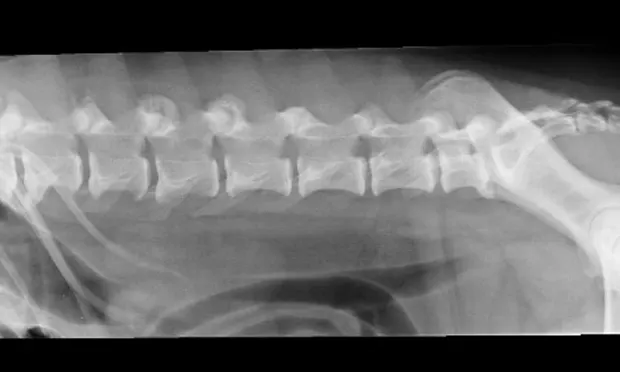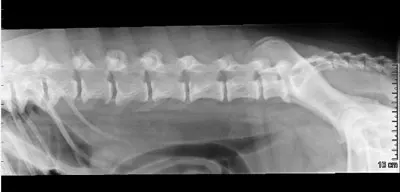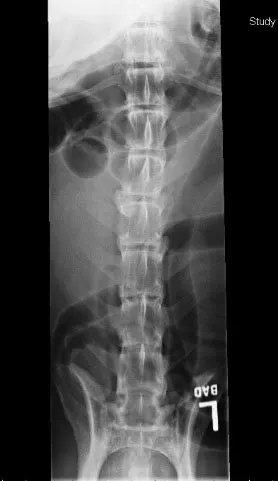Spondyloarthropathy

Spondyloarthropathy (or osteoarthropathy) in dogs is a degenerative, age-related process involving the articular facets (click on PDF icon at the top to see the images with arrows). Performance animals may have pain and inflammation associated with these degenerative changes, but many dogs show no clinical signs. Treatment is similar to that used for arthritis of the appendicular skeleton.

Although bony proliferation of the facets is usually external to the vertebral canal, spinal stenosis leading to spinal cord compression is possible; however, more common conditions, such as disk herniation, should be ruled out in dogs with neurologic signs and spinal pain. Arthritis in the lumbosacral region can be associated with cauda equina syndrome.
Spondyloarthropathy is diagnosed radiographically by the presence of bony proliferation, sclerotic margins, and osteophytosis of the articular facets, and is not necessarily associated with ventral spondylosis deformans. Osteochondritis dissecans lesions or congenital hypoplasia of the articular facets (arrows) can also be seen in young dogs; although not commonly diagnosed, these findings (which can lead to spondyloarthropathy) may be underrecognized in patients that do not undergo advanced imaging studies. Myelography, computed tomography, or magnetic resonance imaging is indicated to determine if bony proliferation due to degenerative joint disease is causing spinal compression.
